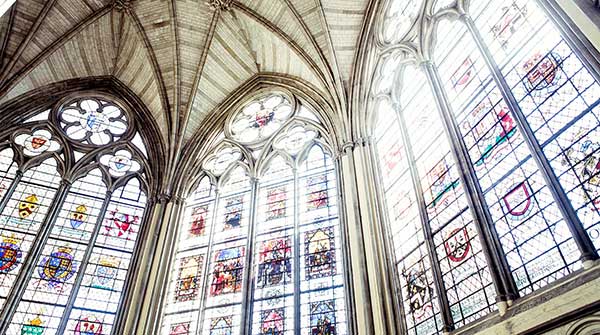The religious ceremony is a relic from a distant time, when the monarch was truly regarded as God’s anointed
 Lots of people will be glued to their television screens for King Charles’ coronation on Saturday, May 6. But they won’t all be Brits, nor necessarily monarchists. The human psyche has a deeply embedded affinity – you might call it a need – for ceremony, pageantry and rituals. And with its thousand-year-old pedigree, the coronation should deliver in spades.
Lots of people will be glued to their television screens for King Charles’ coronation on Saturday, May 6. But they won’t all be Brits, nor necessarily monarchists. The human psyche has a deeply embedded affinity – you might call it a need – for ceremony, pageantry and rituals. And with its thousand-year-old pedigree, the coronation should deliver in spades.
Westminster Abbey has been doing this for a long time, having hosted every coronation since 1066. Charles will be its 40th crowned monarch, the fifth since 1900 and the first in 70 years.
The abbey’s initial development was sponsored by Edward the Confessor in the mid-11th century. Edward, the next-to-last Anglo-Saxon king, was engrossed with religious concerns. Piety wasn’t an occasional or background consideration for him. It was the main thing. Mission accomplished, he died on January 5, 1066, just over a week after the church was consecrated.
 Photo by Jenny Marvin |
| Related Stories |
| Rest well, Queen Elizabeth II – and welcome, King Charles III
|
| What is the monarchy’s future in Canada?
|
| Why all Canadians should be monarchists
|
While official accounts survive for only one 1066 coronation, it’s generally accepted that there were two. The first was for the last Anglo-Saxon king, Harold Godwineson. And the second was for the triumphant William the Conqueror.
Harold wasted no time after Edward’s death. The Godwinesons were an ambitious family and not everyone was thrilled at the prospect of him being king.
So he moved quickly. On January 6, 1066, the day after Edward died, Harold was crowned. It was a busy day for the abbey; a royal burial and a coronation in the same 24 hours. These were dangerous times and there was to be no hanging about!
However, speed wasn’t enough to save Harold or the Godwinesons. William, Duke of Normandy, also had a claim to the throne, which he successfully prosecuted on the battlefield at Hastings in October 1066. What became known as the Conquest was one of those historical hinge points; the male line of England’s hitherto ruling class was largely extinguished. And within two decades, over 90 percent of English land was in Norman hands.
But establishing a veneer of continuity was still a savvy thing to do, so William had himself crowned King of England at Westminster Abbey on Christmas Day 1066. Ealdred, Archbishop of York, presided. Being Anglo-Saxon and having officiated at Harold’s coronation the previous January, Ealdred was a clever choice.
Another hinge point occurred with the arrival of the Stuarts in 1603. Because Elizabeth I had died without an heir, a generally acceptable successor was required. And James Stuart – already James VI of Scotland – was deemed the best available fit.
James ticked two critical boxes. As the great-great-grandson of Henry VII of England, he was a blood relative. And as a firm Protestant, he was religiously safe. The fact that England had beheaded his mother for conspiring against Elizabeth was just an embarrassment to be ignored.
James’ July 1603 coronation also broke new ground in another sense. A key part was conducted in English rather than Latin.
Becoming James I of England and Ireland was a major promotion for the Stuarts. The family originally hailed from Brittany in France and had ascended to the Scottish throne in 1371. Now, with three crowns in hand, it was as if they’d won the lottery.
Alas, their disposition towards absolutism was to ultimately prove fatal.
Fundamentally, the Stuarts believed in the divine right of kings, the idea that the king’s power came directly from God and wasn’t subject to limitations from entities like Parliament. James, for instance, found the English parliamentary arrangement incomprehensible. He was “surprised that my ancestors should ever have permitted such an institution to come into existence. I am a stranger, and found it here when I arrived.”
While this attitude created some difficulty, James was sufficiently shrewd to die in his bed in 1625. His son, Charles I, had a very different experience, literally losing his head to the executioner’s axe on a chilly January day in 1649. Courage and dignity notwithstanding, Charles had what we’d now describe as a profound inability to read the room.
When the 1660 restoration of the monarchy gave the Stuarts another chance, Charles II had learned from his father’s demise. Devious, flexible and cynical, he was prepared to compromise where absolutely necessary.
But his brother and successor, James II, was more rigid and wound up being ejected in the Glorious Revolution of 1688. The Stuart episode thus marked another clear milestone in the evolution of relations between Crown and Parliament.
If you’re paying close attention to the coronation details on May 6, you’ll note the religious ceremony at its heart. It’s a relic from a distant time, an era when the monarch was truly regarded as God’s anointed.
Troy Media columnist Pat Murphy casts a history buff’s eye at the goings-on in our world. Never cynical – well, perhaps a little bit.
For interview requests, click here.
The opinions expressed by our columnists and contributors are theirs alone and do not inherently or expressly reflect the views of our publication.
© Troy Media
Troy Media is an editorial content provider to media outlets and its own hosted community news outlets across Canada.

